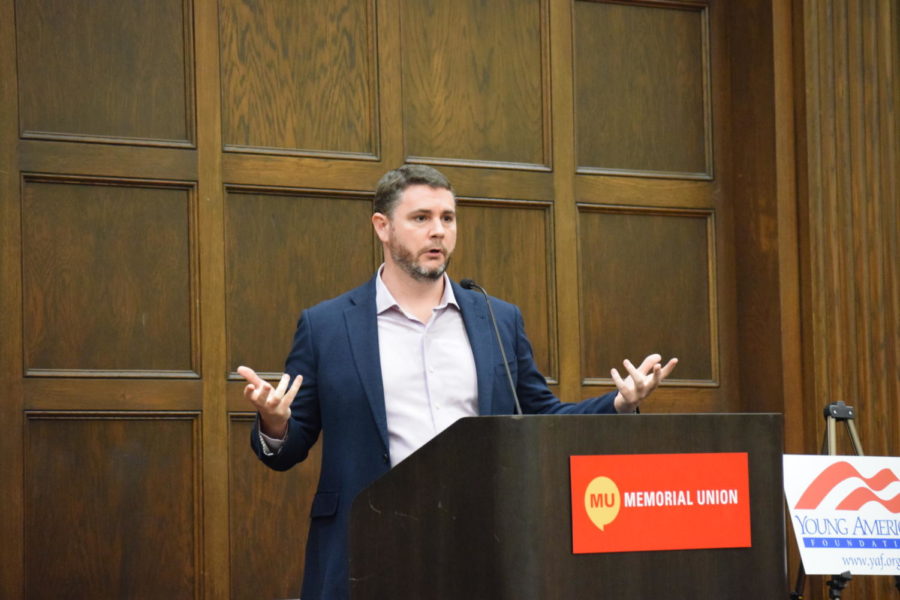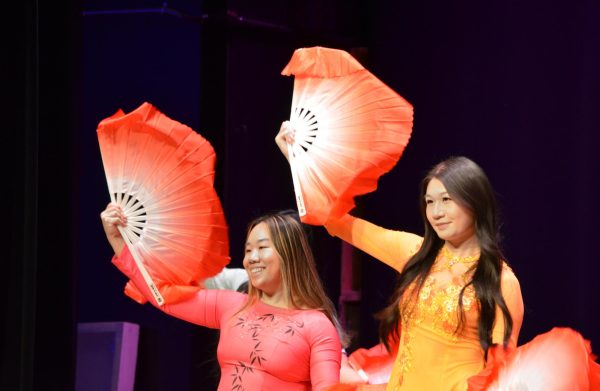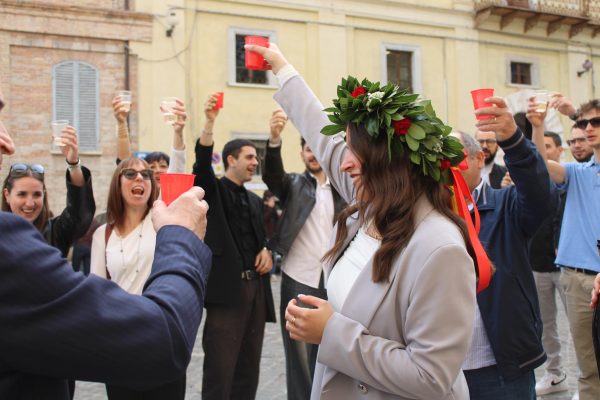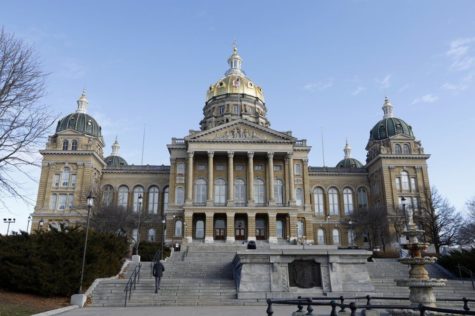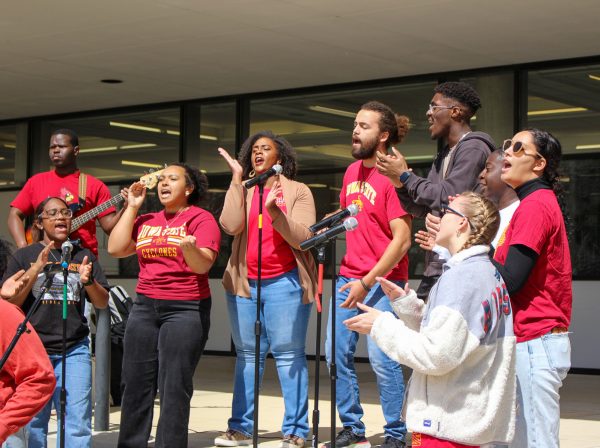Guest speaker argues critical race theory rewrites history
Young Americans for Freedom hosted James Lindsay in response to the recent visit of Nikole Hannah-Jones.
Editor’s note: A sentence in this article misgendered James Lindays. It has since been updated to reflect his proper pronoun. The Daily regrets this error.
Guest speaker James Lindsay argued that critical race theory is linked to marxist ideology and explored consequences of its use by criticizing ‘The 1619 Project’ in a lecture on Wednesday night.
Lindsay, an author, mathematician and political commentator, has co-authored several books taking a stance against critical race theory and exploring its correlation to concepts of Marxism.
The lecture, co-sponsored by the student organization Young Americans for Freedom took place a week after Nikole Hannah-Jones, creator of ‘The 1619 Project,’ gave the Manatt-Phelps 2022 lecture at Iowa State.
Connection between critical race theory and Marxism
Lindsay drew connections between the structures of Marxist ideology and critical race theory.
“There is a social construction of a special kind of productive property,” Lindsay said. “Certain people created that social construction to grant themselves access to it and exclude everyone else from it.”
Those who have access are privileged and gain power and become known as the bourgeoisie, Lindsay said. Those who are excluded, known as the proletariat, are oppressed due to a lack of access and need to work to gain access.
Lindsay explained that these roles create a structure that forms the reality people live in and an ideology that is tied into critical race theory.
“Certain people have established whiteness to justify their white supremacy over others,” Lindsay said. “That’s an ideology of how society should be organized. They set up winners, white people and the people they accepted (model minorities, white adjacents and so on), and then the people they excluded were people of color.”
Consequences of critical race theory
Lindsay said the beliefs promoted by critical race theory will have consequences on society. He demonstrated this by discussing the effects of ‘The 1619 Project’ on education.
“‘The 1619 project’ is meant to provide an ocean of generative material that is meant to produce equity-based critical race theory-based lessons as the backbone of classroom discussions, and that’s all its purpose is,” Lindsay said.
Lindsay said that the project claims that racial problems faced in 2022 can be traced all the way back to Jamestown and the introduction of slaves, something contested by historians.
“The causes of the things we see today are at root due to the division brought in by the creation of this system, and it’s maintained by this new ideology,” Lindsay said.
Lindsay criticized other details of the work such as its reframing of history with modern concepts and exploration of systemic racism while disagreeing with its commentary on the origins of the revolutionary war.
“The purpose of ‘The 1619 Project’ was not and is not to introduce credible history,” Lindsay said. “The purpose of ‘The 1619 Project’ is to introduce what critical race theorists refer to as a counter-story.”
The project rewrites the way people think and tries to make connections that do not exist. This creates an “alternative history to be set against the given history to complicate it and confuse it,” according to Lindsay.
Lindsay explained that this allows people to suggest that there are other sides of the story that have to be considered on the equal ground even if there is no historical backing.
“[Critical race theory advocates] think they are better than us morally and, thus, they are entitled to rewrite our history and rewrite the history of our future going forward,” Lindsay said.
Your donation will support the student journalists of the Iowa State Daily. Your contribution will allow us to purchase equipment, send our student journalists to conferences and off-set their cost of living so they can continue to do best-in-the-nation work at the Iowa State Daily.


